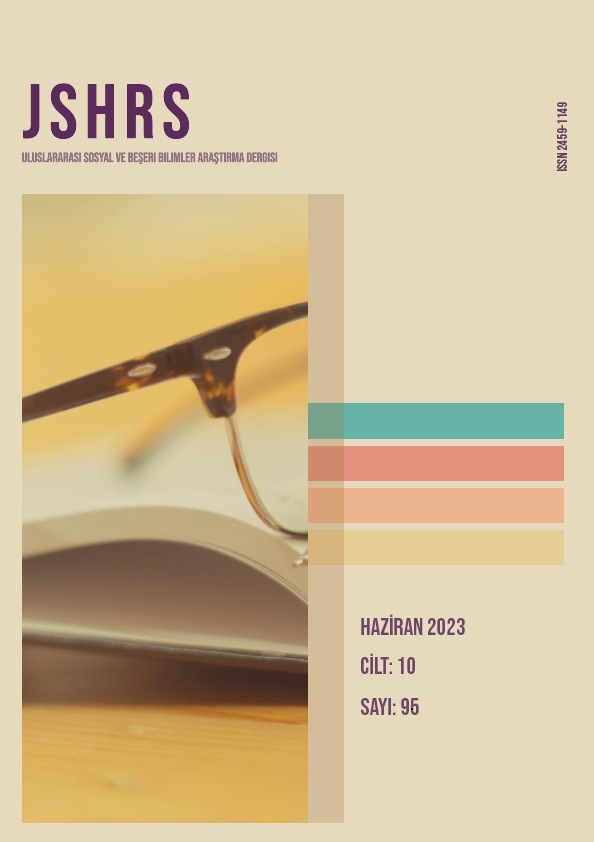The Energy Dimension of Hybrid War and the Ukraine Crisis
DOI:
https://doi.org/10.5281/zenodo.8111935Keywords:
Hybrid War, Energy, Ukraine CrisisAbstract
In hybrid warfare, the boundaries between military and non-military threats are blurred. When it comes to non-military means, energy resources, and energy infrastructure play a crucial role. Energy means both economic and political power. The Ukraine crisis shows that energy security is an integral part of national security, that dependence on Russia can be a strategic liability, and that interdependence between producers and consumers will not promote stability as long as the producer can remain without income and the consumer without gas. Russia uses a combination of military, semi-military, and strategic communication tools to destabilize Ukraine. It has also managed to integrate the energy factor into this strategy (through the nationalization of Ukrainian energy assets and pressure on gas prices). The main purpose of this study is to analyze the impact of energy, one of the Russian hybrid warfare methods, on the Ukrainian War. Based on the hypothesis that Russia has instrumentalized the energy factor, which is one of the hybrid warfare methods, to achieve its political, social, economic, etc. goals in Ukraine, the study examines the concepts of hybrid warfare and energy and analyses the effects of energy, one of the hybrid warfare methods, on the Ukrainian War.
References
Ağır, O. ve Tatlı, M. (2020). Bir Hibrit Savaş Yöntemi Olarak Terör ve Suriye İç Savaşı. Akdeniz Üniversitesi Sosyal Bilimler Enstitüsü Dergisi (AKSOS), 8(35), 35-56.
Balmaseda, M. (2008). Energy Dependency, Politics and Corruption in the Former Soviet Union: Russia's Power, Oligarchs' Profits and Ukraine's Missing Energy Policy, 1995-2006. Routledge. https://www.e-ir.info/pdf/34975
Berzins, J. (2014). Russia’s New Generation Warfare in Ukraine: Implications for Latvian Defense Policy. https://sldinfo.com/wp-content/uploads/2014/05/New-Generation-Warfare.pdf
Energy Strategy Of Russia (2010). Energy Strategy of Russia for the Period Up to 2030. http://www.energystrategy.ru/projects/docs/ES-2030_(Eng).pdf
Energy Strategy of the Russian Federation for the period up to 2020 (in Russian). (2020). http://www.cpnt.ru/userfiles/ files normativ energosafe energostrategy.pdf
Gonchar, M., Chubyk, A. & Ishchuk, O. (2015). Energy Component in New Generation War- fare. Case of Russia’s Hybrid Aggression Against Ukraine. https://geostrategy.org.ua/en/analysis/research/ energetichniy-komponent-viyni-novogo-pokolinnya-priklad-rosiyskoyi-agresiyi-proti-ukrayini/zavantazhiti-pdf-eng
Hoffman, F. (2007). Conflict in the 21st Century: The Rise of Hybrid Warfare. Arlington: Potomac Institute for Policy Studies.
Klimovskiy, S. (2014). Voyna pod znamenem Gazproma. https://hvylya.net/analytics/politics/voyna-pod-znamenem-gazproma.html.
Konoplyanik, A. (2009), Gas transit in Eurasia: Transit issues between Russia and the European Union and the role of the Energy Charter. Journal of Energy and Natural Resources Law, 27(3), 445-486.
Kuboniwa, M., Tabata, S. & Ustinova, N. (2005). How Large is the Oil And Gas Sector of Russia: A Research Report. Eurasian Geography and Economics, 46(1), pp. 68-76.
Maas, J. (2017). Hybrid Threat and CSDP. In J. Rehrl (Ed.), Handbook on CSDP- The Common Security and Defence Policy of the European Union (pp. 125–130). Federal Ministry of Defence and Sports of the Republic of Austria. https://doi.org/10.2855/764888
Magda, Y. (2018). The Roots of Confrontation: Energy Aspect of Hybrid Warfare. Historia i Polityka, 26(33), 63-71.
Metz, S. & Cuccia, P. (2011). Defining War for The 21st Century. Strategic Studies Institute Annual Strategy Conference Report. https://www.files.ethz.ch/isn/126626/pub1036.pdf
Military Balance, (2015). Complex crises call for adaptable and durable capabilities. Military Balance, 115 (1), 5–8. https://doi.org/10.1080/04597222.2015.996334
NATO Transformation Seminar (2016). In White Paper- Next Steps in NATO’S Transformation: To the Warsaw Summit and Beyond. Washington. https://sgp.fas.org/crs/row/R44550.pdf
Ovchinsky V.S. and Sundiev I.Yu. (2013). Организационное Оружие: Функциональный генезис и система технологий ХХI века (доклад Изборскому клубу). http://www.dynacon.ru/ content/articles/1466/
Popescu, N. (2015). Hybrid tactics: neither new nor only Russian, European Union Institute for Security Studies. https://www.iss.europa.eu/content/hybrid-tactics-neither-new-nor-only-russian
Reeves, S. R. & Barnsby, R. E. (2013). The New Griffin of War: Hybrid International Armed Conflicts. Harvard International Review, 34(3), 16-18.
Sadeghi, S. S. (2014). В противостоянии с США Россия возвращает себе роль сверхдержавы. https://topwar.ru/page,1,2,57672-v-protivostoyanii-s-ssha-rossiya-vozvraschaet-sebe-rol-%20 sverhderzhavy.html
Zhiznin, S. (2010). Russian energy diplomacy and international energy security (geopolitics and economics). Baltic Region. https://nbn-resolving.org/urn:nbn:de:0168-ssoar-255290
Downloads
Published
How to Cite
Issue
Section
License
Copyright (c) 2023 INTERNATIONAL JOURNAL OF SOCIAL HUMANITIES SCIENCES RESEARCH

This work is licensed under a Creative Commons Attribution 4.0 International License.


